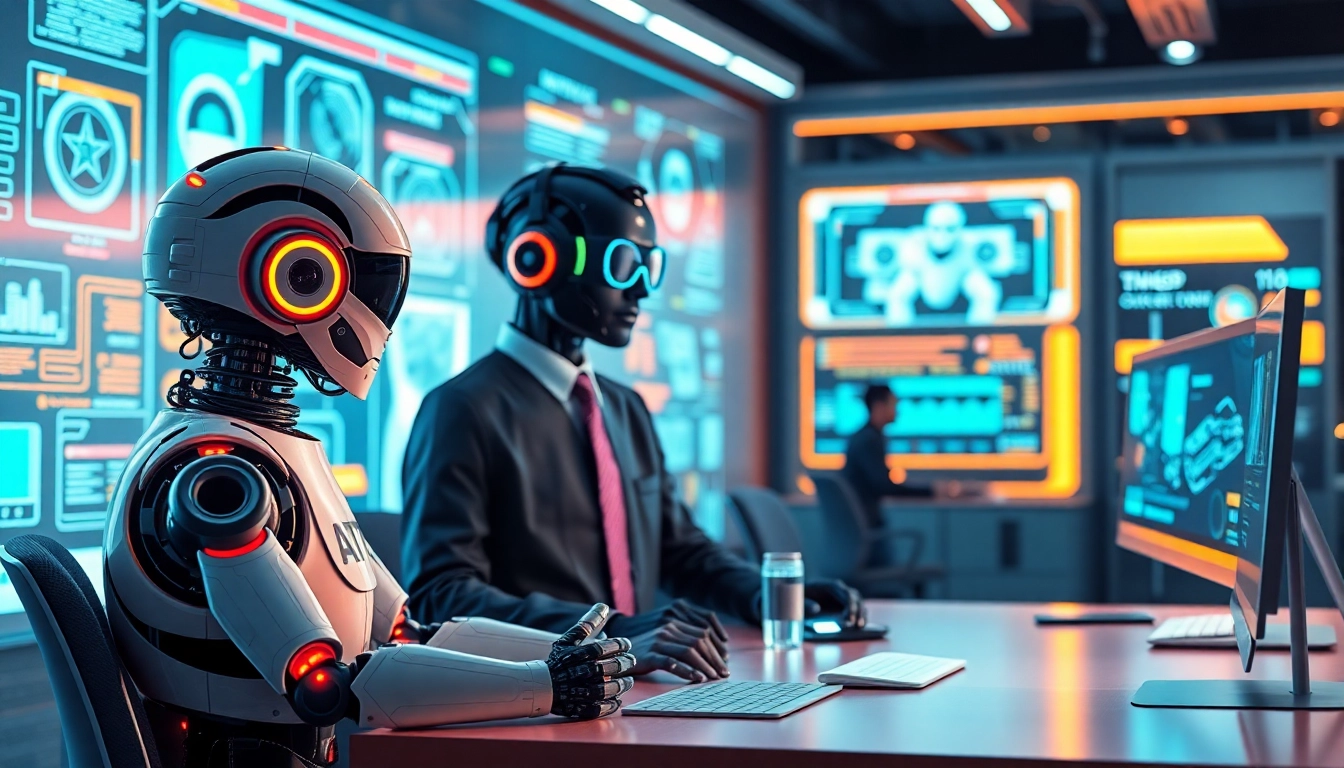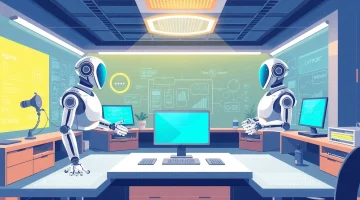
How Agentic Human AI is Redefining Work and Collaboration in Today’s World
Understanding Agentic Human AI
Defining Agentic Human AI
Agentic Human AI refers to advanced artificial intelligence systems designed to perform tasks autonomously, making decisions and taking actions without continuous human oversight. These AI systems leverage machine learning, natural language processing, and other advanced technologies to understand context, grasp complex patterns, and drive productivity in various domains. In essence, Agentic Human AI signifies a paradigm shift where AI not only assists humans but can operate independently across multifaceted environments.
Historical Context and Evolution
The evolution of Agentic Human AI can be traced back to early AI systems that relied heavily on rule-based algorithms. As computational power increased and vast data became more accessible, machine learning techniques emerged, allowing AI systems to improve their performance based on experience. The introduction of neural networks led to breakthroughs in understanding complex data structures, paving the way for the development of autonomous agents capable of acting with a degree of agency.
Key milestones in this evolution include:
- 1950s-1970s: Early AI research focuses on symbolic AI, where machines follow explicit rules to solve problems.
- 1980s-1990s: The rise of machine learning, particularly supervised and unsupervised learning, which enabled systems to learn from patterns in data.
- 2000s-Present: Advancements in deep learning and the emergence of big data, leading to sophisticated neural networks that operate autonomously.
Key Characteristics of Agentic AI
Agentic Human AI is characterized by several defining features that differentiate it from traditional AI systems:
- Autonomy: These systems can operate independently, processing information and making decisions without needing constant human input.
- Adaptability: They can learn and adjust their strategies based on changing circumstances and new data.
- Contextual Awareness: Agentic AI systems possess the capability to understand their environment and surroundings, allowing for more informed decision-making.
- Self-Optimization: They continually improve their performance by analyzing past outcomes and adjusting their approach accordingly.
Working Mechanisms of Agentic Human AI
Autonomy in Decision-Making
The hallmark of Agentic Human AI is its ability to make decisions autonomously. This capability arises from sophisticated algorithms that analyze vast datasets to identify trends and predict outcomes. For instance, in business applications, agentic AI can optimize supply chain logistics by predicting demand fluctuations and adjusting inventory levels without human intervention. This not only saves time but also minimizes errors that could occur through human oversight.
Data Utilization and Learning
Data is the lifeblood of any AI system, and Agentic Human AI is no exception. These systems employ advanced data analytics to gather, process, and learn from data streams continuously. Using techniques such as reinforcement learning, they adapt based on real-time feedback from their environment. This iterative learning process enables them to refine their approaches over time and develop strategies that are more effective and efficient.
Interactivity with Human Users
Despite their autonomy, Agentic Human AI systems are designed to interact with human users seamlessly. They utilize natural language processing to communicate effectively, understand user queries, and provide relevant information or assistance. For example, in customer service applications, these AI systems can handle inquiries and resolve issues independently, escalating complex cases to human agents only when necessary.
Applications of Agentic Human AI
In Business and Work Environments
Agentic Human AI is already transforming the business landscape by automating routine tasks and providing insights that were previously unattainable. In sectors such as finance, marketing, and operations management, AI systems are enhancing decision-making processes and driving efficiencies.
Examples of applications include:
- Financial Services: AI-driven algorithms can analyze market trends, recommend investments, and even execute trades autonomously, reducing human error and optimizing financial performance.
- Marketing Automation: AI systems can analyze consumer behavior patterns to create targeted campaigns, optimizing engagement, and improving conversion rates.
- Human Resources: AI can streamline recruiting processes by screening resumes and matching candidates to job descriptions, allowing HR teams to focus on more strategic initiatives.
Healthcare Innovations
In healthcare, Agentic Human AI holds the potential to revolutionize patient care and clinical decision-making. By analyzing patient data and medical research, AI can assist healthcare professionals in diagnosing conditions and recommending treatment plans.
Notable applications include:
- Diagnostic Tools: AI algorithms can analyze medical images, such as X-rays and MRIs, identifying anomalies with high accuracy.
- Personalized Medicine: AI can help tailor treatments based on individual patient data, improving treatment efficacy and minimizing adverse effects.
- Virtual Health Assistants: These AI systems can engage with patients, monitor symptoms, and provide timely interventions, enhancing the overall healthcare experience.
Educational Tools and Resources
Education is another domain where Agentic Human AI is making significant strides. AI-based educational tools can tailor learning experiences to individual student needs, offering personalized support that enhances engagement and knowledge retention.
Applications in education include:
- Adaptive Learning Platforms: These systems adjust content delivery based on student performance, ensuring a customized learning path that addresses knowledge gaps.
- AI Tutors: AI-powered tutoring systems can provide assistance on demand, helping students grasp complex concepts at their own pace.
- Administrative Efficiency: AI can automate administrative tasks such as grading and scheduling, allowing educators to focus more on teaching and mentoring.
Challenges and Ethical Considerations
Technological Limitations
Despite its potential, Agentic Human AI faces several technological challenges. One significant hurdle is the need for high-quality, unbiased data. AI systems are only as effective as the data they are trained on, and any bias in the data can lead to skewed outcomes. Additionally, ensuring data privacy and security remains a critical concern, particularly in sensitive areas like healthcare and finance.
Ethical Implications
As Agentic Human AI systems increasingly operate autonomously, ethical considerations become paramount. Questions surrounding accountability, transparency, and the potential for misuse arise. For example, if an AI system makes a harmful decision, determining responsibility can be complex. Ethical guidelines and frameworks must evolve alongside technological advancements to mitigate risks and ensure responsible AI use.
Future Regulations and Guidelines
In light of these challenges, regulators worldwide are beginning to explore frameworks that govern the use of AI technologies. Future regulations may mandate stringent testing protocols for AI systems, establish guidelines for ethical conduct, and promote transparency in AI decision-making processes. Collaborative efforts between governments, tech companies, and civil society will be essential to develop effective regulatory strategies that balance innovation with societal welfare.
The Future of Agentic Human AI
Potential Developments on the Horizon
The future of Agentic Human AI is poised for remarkable advancements. Innovations in quantum computing and neuromorphic chips may significantly enhance the capabilities of AI systems, making them even more powerful and efficient. Additionally, the integration of AI with other technologies, such as blockchain and IoT, could lead to groundbreaking applications across various sectors.
Impact on Workforce Dynamics
As Agentic Human AI continues to evolve, its impact on the workforce is likely to be profound. While AI will automate certain tasks, it will also create new roles that require human oversight, creativity, and emotional intelligence. Upskilling and reskilling initiatives will become essential as organizations adapt to this new landscape, ensuring that workers are equipped to thrive alongside AI technologies.
Long-term Vision for Society
Ultimately, the long-term vision for Agentic Human AI is one where these systems enhance human potential rather than replace it. By automating repetitive tasks and providing insights, AI can free individuals to focus on more creative, strategic, and fulfilling endeavors. A collaborative relationship between humans and AI can lead to innovative solutions that address pressing global challenges, fostering a future where technology and humanity coexist harmoniously.

